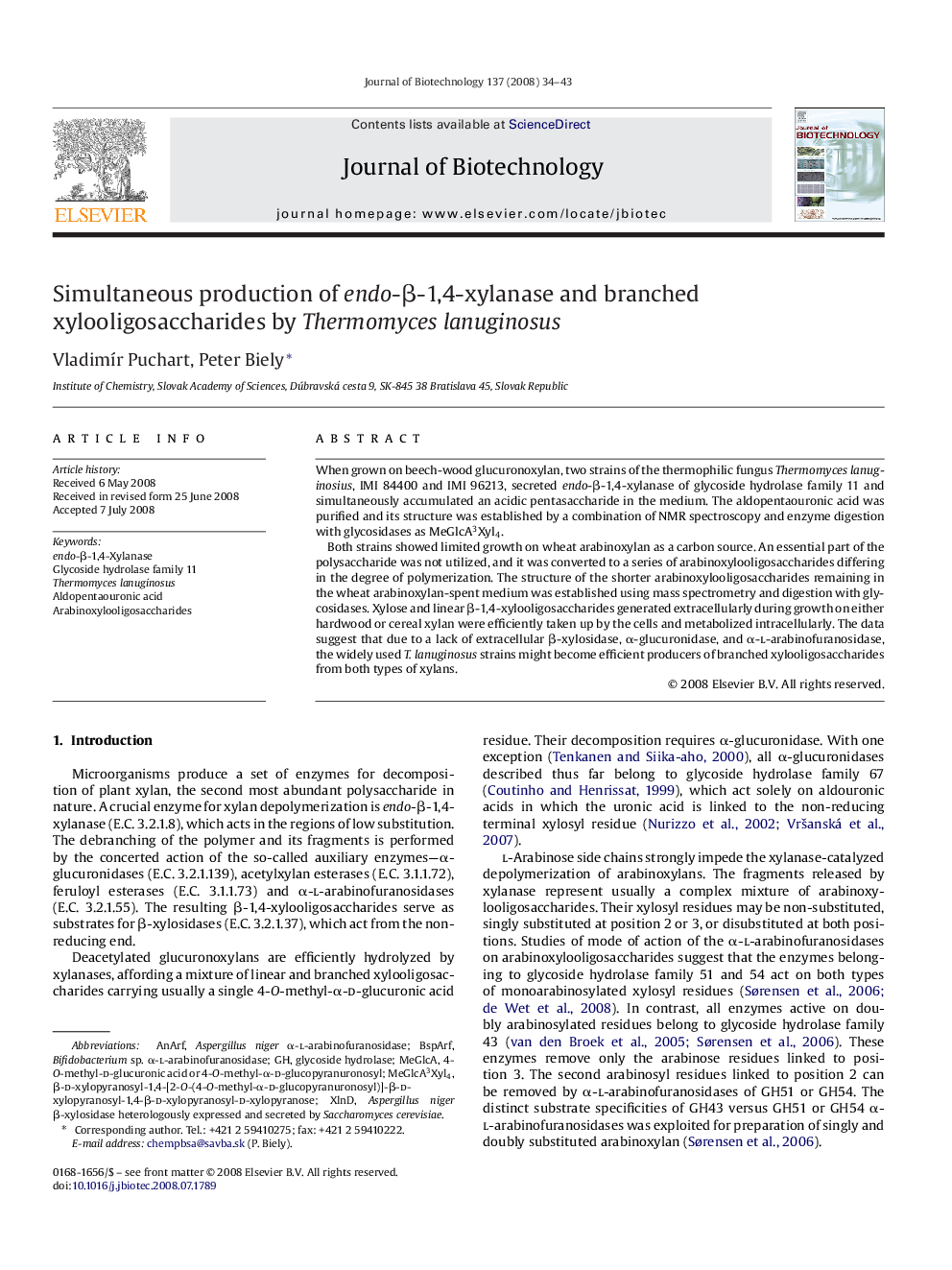| Article ID | Journal | Published Year | Pages | File Type |
|---|---|---|---|---|
| 24838 | Journal of Biotechnology | 2008 | 10 Pages |
When grown on beech-wood glucuronoxylan, two strains of the thermophilic fungus Thermomyces lanuginosius, IMI 84400 and IMI 96213, secreted endo-β-1,4-xylanase of glycoside hydrolase family 11 and simultaneously accumulated an acidic pentasaccharide in the medium. The aldopentaouronic acid was purified and its structure was established by a combination of NMR spectroscopy and enzyme digestion with glycosidases as MeGlcA3Xyl4.Both strains showed limited growth on wheat arabinoxylan as a carbon source. An essential part of the polysaccharide was not utilized, and it was converted to a series of arabinoxylooligosaccharides differing in the degree of polymerization. The structure of the shorter arabinoxylooligosaccharides remaining in the wheat arabinoxylan-spent medium was established using mass spectrometry and digestion with glycosidases. Xylose and linear β-1,4-xylooligosaccharides generated extracellularly during growth on either hardwood or cereal xylan were efficiently taken up by the cells and metabolized intracellularly. The data suggest that due to a lack of extracellular β-xylosidase, α-glucuronidase, and α-l-arabinofuranosidase, the widely used T. lanuginosus strains might become efficient producers of branched xylooligosaccharides from both types of xylans.
